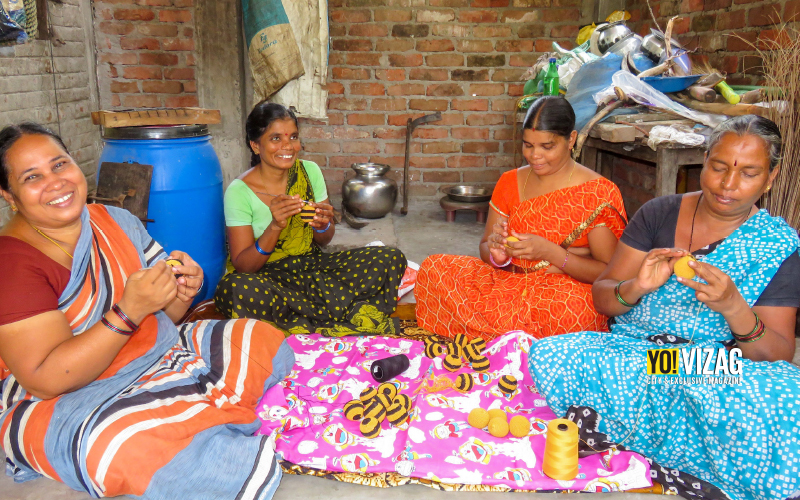The intricately woven Narsapur lace speaks of a rich history of handicrafts that dates back to 100 years and many generations. Artisans from this quaint town, share its story with Jaya Siva Murty.
The age-old industry of handmade crochet lace-work has been passed down from one generation to the next and is mainly undertaken by the women of the household. In fact, it is part of the daily routine for many. After finishing the morning chores of the house, packing the kids to school many women sit with their spindles to work. Using cotton threads that are commonly in white or off-white colours, they knit out intricate patterns of laces for dresses, table-covers and varied other purposes. Other members of the family play a role too, as they help in procuring thread, picking up orders, marketing or dispatch.
Introduced to the work in the 1990s, Dilip Kumar, a craftsman from the town of Pallakollu near Narsapur, shares that much before that, he would see his mother knitting the thread on her needle, a sight that inspired him to take it up as well. But actual origins are traced to much before that, and Prakash from the Godavari Delta Women Lace Artisans Co-operative Cottage Industrial Society Limited (GDWLACC), traces its origin to a lady called Mrs. Macre of Scotland, who taught it to the locals here.
The work is order-based, and once an order comes in, thread is procured from Delhi. With orders from varied parts of the country, a large percentage of work comes from foreign countries like the Gulf, Italy and other places. Involving deft weaving skills, plenty of patience, along with an attention to detail, this handmade lace from Narsapur is favoured by many.
The women workers come not just from the town of Narsapur, which lends its name to the craft-form, but also from the nearby towns like Pallakollu, and villages in both East Godavari and West Godavari regions. However, a large majority of artisans are the older women, as back in the old days, every woman in the house would usually know or learn this work. Today, those numbers are on the decline, as only some people are taking interest in this craft. The reason for this can be attributed to the reducing market share of lace-work. Orders are mostly seasonal, and when there is work, there is money, forcing people to look for options that sustain their daily lives. Also, the involvement of middle-men, fragmented market and an inefficient Lace Park are other hurdles in the way.
So while 50 women together came together to form the GDWLACC in 1979, various gaps in the market still exist. With a reducing market share and the added burden of GST, each has to fend for his own, and people have turned to take individual orders. Most craftsmen have to hire artisans based on the size of every order. While platforms like Saras provide some respite, much more is needed. Also while the Lace Park once supported through training and design, the artisan here still hopes for marketing support and subsidies.
The lace-work of Narsapur is a unique craft-form. With a beautiful range of products on offer, one can only hope that this craft finds the opportunity to blossom, thus inspiring the next generation to take it up.
Get to Narsapur: A five and a half hour drive from Vizag via NH16 can get you here.










Discussion about this post